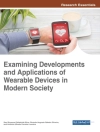Ambipolar materials represent a class of materials where positive and negative charge carriers can both transport concurrently. In recent years, a diverse range of materials have been synthesized and utilized for implementing ambipolar charge transport, with applications in high‐density data storage, field effect transistors, nanotransitors, photonic memory, biomaterial-based memories and artificial synapses. This book highlights recent development of ambipolar materials involving materials design, fundamental principles, interface modifications, device structures, ambipolar characteristics and promising applications. Challenges and prospects for investigating ambipolar materials in electronics and optoelectronics are also discussed. With contributions from global leaders in the field, this title will appeal to graduate students and researchers who want to understand the design, materials characteristics, device operation principles, specialized device application and mechanisms of the latest ambipolar materials.
Table of Content
Introduction and fundamental principles of ambipolar materials; Ambipolar organic polymers for thin film transistors and solar cells; Bilayer structures with ambipolar properties; Organic-inorganic hybrid perovskite materials with ambipolar properties; Blend structures with ambipolar properties; Graphene: Preparation and Applications; Synthsis and applications of graphene quantum dots; Carbon Nanotube: Preparation and Applications; Mathematical modeling and simulations on using nanotubes and graphene for ultrafiltration, and molecular and charge transport; The Material Family of Two-Dimensional Transition Metal Chalcogenides Semiconductors; Controllable Systhesis of Two-Dimensional Layered Transition Metal Chalcogenides and their heterostructures; Ambipolar inorganic two-dimensional materials for solar cells; Ambipolar transistors for logic operation; Ambipolar two-dimensional materials and devices for neuromorphic computing; Light-emitting transistors with ambipolar materials; Ambipolar materials for gas sensing; Nonvolatile bipolar transistor memory; Challenges, possible strategies and conclusions
About the author
Prof. Su-Ting Han is a visiting associate professor at The University of Michigan and also head of Department of Microelectronics at Shenzhen University. She received her MSc degree in Analytical Chemistry from Hong Kong Baptist University and her Ph D degree in Physics and Materials Science from City University of Hong Kong. Her research interests include functional electronic devices and flexible, stretchable, and wearable electronics.












